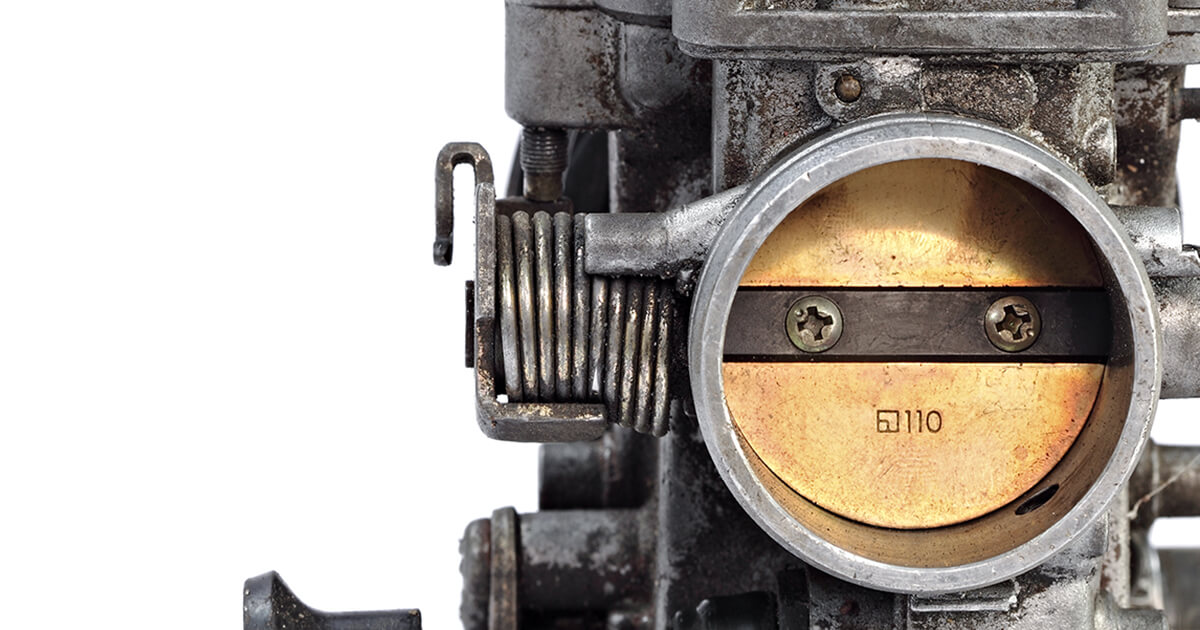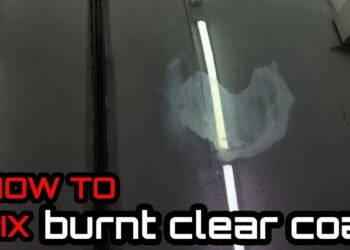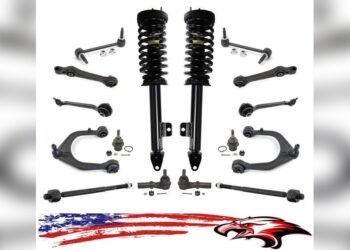Cleaning a throttle position sensor (TPS) is crucial. It ensures your car runs smoothly.
A dirty throttle position sensor can lead to poor engine performance. Your car might stall, hesitate, or even consume more fuel. Keeping it clean is essential for optimal performance. In this guide, you will learn the step-by-step process of cleaning a throttle position sensor.
It’s simpler than you might think. With a few tools and a bit of time, you can improve your car’s functionality. Let’s dive into the details and keep your engine running at its best.

Credit: www.yotatech.com
Introduction To Throttle Position Sensor
The Throttle Position Sensor (TPS) plays a crucial role in your vehicle’s performance. It monitors the position of the throttle valve in the engine. This sensor sends data to the car’s computer, helping it adjust the air and fuel mixture. A well-functioning TPS ensures smooth acceleration and optimal fuel efficiency.
Purpose And Importance
The TPS provides real-time data to the car’s computer. The computer uses this data to control the engine’s air-fuel mixture. A precise air-fuel ratio is vital for engine performance and fuel economy. The sensor also helps in controlling the idle speed. A faulty TPS can lead to poor engine performance and decreased fuel efficiency.
Common Symptoms Of A Dirty Sensor
A dirty or faulty TPS can cause several noticeable issues:
- Erratic idling: The engine may idle too high or too low.
- Poor acceleration: You might experience hesitation or stalling.
- Check Engine Light: This warning light may turn on.
- Unstable engine RPM: The engine speed may fluctuate unpredictably.
These symptoms indicate that the TPS needs attention. Cleaning or replacing it can restore proper engine function.
Tools And Materials Needed
Cleaning the Throttle Position Sensor (TPS) improves your vehicle’s performance. To do this correctly, you need the right tools and materials. Below is a guide on what you need to get started.
Essential Tools
Having the right tools makes the job easier. Here is a list of essential tools:
- Screwdrivers: Phillips and flat-head types.
- Wrenches: A set of small wrenches.
- Multimeter: To check the sensor readings.
- Socket Set: Various sizes for different bolts.
- Needle-Nose Pliers: For tight spaces.
Recommended Cleaning Supplies
Using proper cleaning supplies ensures the TPS remains undamaged. Below are the recommended supplies:
- Throttle Body Cleaner: Specifically designed for TPS cleaning.
- Lint-Free Cloth: To wipe off any residue.
- Protective Gloves: To keep your hands clean and safe.
- Safety Glasses: To protect your eyes.
With these tools and supplies, you can clean your Throttle Position Sensor effectively. Remember to work carefully to avoid damaging any components.
Safety Precautions
Cleaning your throttle position sensor is essential for your car’s performance. But safety should be your priority. Follow these precautions to stay safe while you work.
Protective Gear
Always wear protective gear. This includes gloves and safety glasses. Gloves protect your hands from chemicals and dirt. Safety glasses shield your eyes from debris and harmful substances.
Work Area Preparation
Ensure your work area is well-ventilated. Good ventilation helps disperse fumes from cleaning solvents. Also, ensure the area is clean and free from clutter. A tidy workspace reduces the risk of accidents.
Keep a fire extinguisher nearby. Some cleaning solvents are flammable. Having a fire extinguisher can help you react quickly in case of a fire.
Keep all tools and materials within reach. This includes cleaning solvents, rags, and any tools you might need. Organizing your tools makes the process smoother and safer.
| Protective Gear | Work Area Preparation |
|---|---|
| Gloves | Well-ventilated area |
| Safety Glasses | Clean and clutter-free |
| Proper Clothing | Fire extinguisher nearby |
Remember, safety comes first. Follow these precautions to ensure a safe working environment.
Locating The Throttle Position Sensor
Locating the Throttle Position Sensor (TPS) is an essential step in cleaning it. The TPS plays a crucial role in your vehicle’s engine performance. Knowing its location helps you access and clean it effectively. This section will guide you through the process of finding the TPS in your car.
Engine Bay Overview
First, open the hood of your car. This exposes the engine bay. The engine bay houses many components, including the TPS. Look for the air intake system. The intake manifold usually connects to the throttle body. The TPS is typically mounted on the throttle body.
Sensor Identification Tips
The TPS is a small, black or gray component. It is usually mounted on the side of the throttle body. Look for a three-wire electrical connector attached to it. This connector helps in identifying the TPS. The sensor is often secured with two small screws or bolts. Use a flashlight if the area is dark or hard to see. Identifying the TPS accurately is crucial for cleaning it effectively.
Disconnecting The Sensor
Cleaning your throttle position sensor (TPS) starts with disconnecting it safely. This involves a few steps that ensure you don’t damage the sensor or your vehicle. Follow these steps carefully to avoid any issues.
Battery Disconnection
First, you need to disconnect the car battery. This is a crucial step to prevent any electrical shorts or shocks.
- Turn off the ignition and remove the keys.
- Open the hood of your car.
- Use a wrench to loosen the negative battery terminal.
- Remove the negative cable from the battery post.
Make sure the cable does not touch the battery post while you work.
Removing Electrical Connectors
Next, focus on the electrical connectors attached to the throttle position sensor.
- Locate the TPS on the throttle body. Refer to your vehicle’s manual if needed.
- Identify the electrical connectors that attach to the sensor.
- Carefully press the tab on the connector and pull it out. Don’t yank the wires.
If the connector seems stuck, wiggle it gently until it releases.
Disconnecting the sensor properly sets you up for a successful cleaning.

Credit: www.youtube.com
Cleaning The Throttle Position Sensor
The Throttle Position Sensor (TPS) is crucial for your car’s engine performance. A dirty sensor can affect fuel efficiency and smooth acceleration. Regular cleaning ensures your engine runs smoothly. Let’s dive into the steps for cleaning the TPS properly.
Applying Cleaner
First, remove the sensor from the throttle body. Place it on a clean surface. Use a specialized throttle body cleaner. Spray the cleaner onto the sensor’s surface. Ensure to cover all areas, especially where grime is visible. The cleaner will dissolve the dirt and grease.
Wiping And Drying
After applying the cleaner, take a clean microfiber cloth. Gently wipe the sensor to remove dissolved dirt. Use a soft-bristled brush for stubborn grime. Make sure not to damage the sensor.
Allow the sensor to air dry completely. Avoid using compressed air as it may damage the sensor. Once dry, reattach the sensor to the throttle body. Secure it properly to avoid any air leaks.
Use the following table for a quick summary:
| Step | Description |
|---|---|
| 1 | Remove the sensor |
| 2 | Apply throttle body cleaner |
| 3 | Wipe with a microfiber cloth |
| 4 | Allow to air dry |
| 5 | Reattach sensor |
By following these steps, you ensure your throttle position sensor remains clean. This helps in maintaining optimal engine performance.
Reinstalling The Sensor
Once you have cleaned your throttle position sensor, it’s time to reinstall it. Proper reinstallation is crucial for your vehicle’s performance. Follow these steps to ensure a smooth process.
Reconnecting Electrical Connectors
Begin by carefully reconnecting the electrical connectors. Ensure they click into place. This ensures a secure connection. Make sure there are no loose wires. A loose connection can cause issues.
Securing Sensor In Place
Next, secure the sensor back into its original position. Use the screws you removed earlier. Tighten them firmly but do not over-tighten. Over-tightening can damage the sensor. Double-check that the sensor is stable.

Credit: www.mobil.com
Testing And Verification
Testing and verifying the throttle position sensor (TPS) after cleaning is crucial. This ensures your vehicle runs smoothly and efficiently. Follow these steps carefully to make sure everything is in order.
Reconnecting The Battery
First, reconnect the battery to your vehicle. This step is simple:
- Attach the positive terminal first.
- Then connect the negative terminal.
Make sure the connections are tight and secure. A loose connection can cause problems. Once the battery is connected, you are ready for the next step.
Running The Engine
Start the engine and let it idle for a few minutes. Observe the engine’s behavior closely:
- Is the idle smooth and steady?
- Are there any unusual sounds?
If everything seems fine, proceed to check the throttle response. Press the accelerator gently and observe:
- Is the throttle response immediate?
- Does the engine rev smoothly?
If you notice any issues, you may need to recheck the TPS connections or clean it again. Consistent performance indicates a successful cleaning.
Maintenance Tips
Maintaining a clean throttle position sensor (TPS) is essential for your vehicle. It ensures smooth acceleration and optimal engine performance. Here are some key maintenance tips to keep your TPS in top shape.
Regular Inspection
Inspect the throttle position sensor regularly. Check for dirt, grime, or debris. These can affect the sensor’s performance. Make it a habit to look under the hood every few months. This simple step helps you catch any issues early.
Keep an eye out for any signs of wear or damage. A faulty sensor can lead to poor engine performance. Regular checks can prevent this problem.
Avoiding Common Mistakes
Many people make mistakes when cleaning their TPS. One common error is using harsh chemicals. These can damage the sensor. Use a cleaner designed for electronic parts. It’s safer and more effective.
Another mistake is not disconnecting the battery. Always disconnect the battery before cleaning. This prevents any electrical issues. Remember, safety first!
Over-tightening the screws can also be a problem. Tighten them just enough to secure the sensor. Overtightening can damage the sensor or its mount.
By avoiding these mistakes, you can ensure your TPS remains in good working order.
Frequently Asked Questions
What Is A Throttle Position Sensor?
A throttle position sensor measures your car’s throttle position. It helps control engine power.
Why Clean A Throttle Position Sensor?
Dirt and grime can affect sensor performance. Cleaning it ensures smooth engine function.
How Often Should You Clean It?
Clean the throttle position sensor every 30,000 miles or as needed for optimal performance.
What Tools Are Needed For Cleaning?
You’ll need a screwdriver, throttle body cleaner, and a clean cloth for this task.
Can You Clean It Without Removing It?
Yes, you can clean it without removal. Spray cleaner directly on the sensor.
Conclusion
Cleaning your throttle position sensor is crucial for optimal engine performance. Regular maintenance prevents issues and improves fuel efficiency. Follow the steps carefully to ensure a clean sensor. A clean sensor means a smoother ride and better throttle response. Don’t ignore this small but vital part of your vehicle.
Keep your engine in top shape. Consistent care ensures long-term benefits. Happy driving!

















